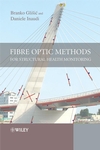Wednesday, March 26, 2008
SHM on Government Technology
http://www.govtech.com/gt/261440?topic=117693
Entitled "Wireless Sensors May Help Governments Monitor Health of Aging Infrastructure" it describes the consequences of the 35W bridge collapse and some of the technologies that might prevent similar accidents in the future.
In particular, the article introduces a wireless technology perfected at Clarkson University by the team of prof. Kerop Janoyan:
New York is one of many states re-evaluating bridge inspection methods after the Minneapolis bridge collapse by turning to SHM technologies. The state department of transportation's pilot program uses wireless sensors placed on bridges to transmit data on stress and vibration, and should warn if a bridge is weak or needs repairs. The system, designed by Clarkson University associate professor Kerop Janoyan, is expected to help engineers monitor the state's 17,000 bridges.
"Providing more information is the first step to a feedback system," Janoyan said. "Without information, you can't have any feedback when ultimately you're trying to control potential damage."
A New York bridge between Canton and Potsdam is serving as a test site - 40 wireless channel sensors affixed to the bridge log in real-time data to a base station. Each sensor is about the size of a few decks of playing cards, and cost about $200. The battery-powered sensors are connected to a computer that aggregates sensor data and determines whether to alert inspectors.
The article than describes the work of prof. Farhad Ansari at the University of Chicago on optical fiber sensors:
The Department of Civil and Materials Engineering at the University of Illinois at Chicago is developing a similar bridge monitoring approach, using fiber-optic wires instead of wireless sensors. A research program at the university called - Smart Sensors and NDT Laboratory - develops fiber-optic sensors for monitoring structures during construction and throughout their service lives.
The Illinois Department of Transportation awarded a $55,000 contract in September 2007 to the laboratory - to devise a system that can detect bridge scour - when sediment is washed from the bottom of the river and weakens a bridge's support. The project involves embedding a fiber-optic sensor in a rod and driving the rod into a river base near the piers.
Fiber-optic sensors assess a bridge's overall health by measuring microfractures and vibration frequency. Fiber optics promise many innovations for bridge monitoring since they are smaller and more flexible than electrical wires, are immune to interference from wireless devices, and aren't prone to fires or explosions, said Farhad Ansari, professor and head of the Civil Engineering and Materials Department at the University of Illinois at Chicago.
The article also describes projects at the University of Michigan on "sensing paint" at at Sandia National labs on remote sensing.
35W bridge collapse pictures

In particular it is interesting to notice that some of the gusset plates appear to be buckled as early as 2003 and the fractured plate show signs of corrosion.
Wednesday, March 12, 2008
SPIE Smart Structures and Materials + Nondestructive Evaluation and Health Monitoring

SPIE Smart Structures and Materials + Nondestructive Evaluation and Health Monitoring conference in San Diego.
- The seems to be a growing interest in aerospace applications, SHM and smart structures for active control.
- The civil engineering and structural monitoring parts are attracting less presentations and little new work. Probably more specific conferences such as SHMII and IABMAS are becoming more relevant in this field.
- A lot of papers as usual on Fiber Optic sensing and a growing number on wireless sensing. This technology is maturing and appears now adapted for field use, but mostly limited to short- and medium-term applications.
- Besides the usual bridges, other structures were also monitored, including aircraft, oil platforms and buildings.
Norhwestern University pubblications
Saturday, March 1, 2008
2nd Asia-Pacific Workshop on Structural Health Monitoring
Conference Announcement:
Organiser: Materials Australia
Location: Melbourne, Australia
Date: December 02-04, 2008
This is the second in a series of biennial Asia-Pacific workshops that focuses on the field of Structural Health Monitoring (SHM). This is a particularly promising area that has attracted significant attention in recent years for its wide potential of applications, particularly for civil infrastructures, and maritime and aircraft structures. The purpose of the workshop is to allow a forum where key and emerging technical issues that are critical and unique in structural health monitoring can be discussed and identified, as well as allow current state-of-the-art technologies and R&D activities in the field to be presented. The workshop is also intended to promote exchanges and cross-fertilisation among many disciplines.
The workshop shall focus on, but is not limited to, the following topics:
- Sensor and Actuator Development
- Reliability of Structural Health Monitoring Methodologies
- Bio-inspired sensors
- Damage Identification and Properties/ Integrity Characterisation and Assessment: Intelligent Processing of Materials and Structures
- System Integration
- Applications (particularly in the field of aircraft, automotive, rail and maritime structures, civil and petroleum infrastructure, textiles etc)
- Homeland Security
Website: http://www.materialsaustralia.com.au/SHM2008/



